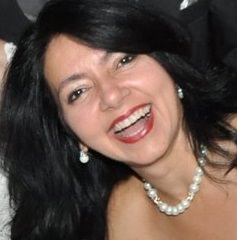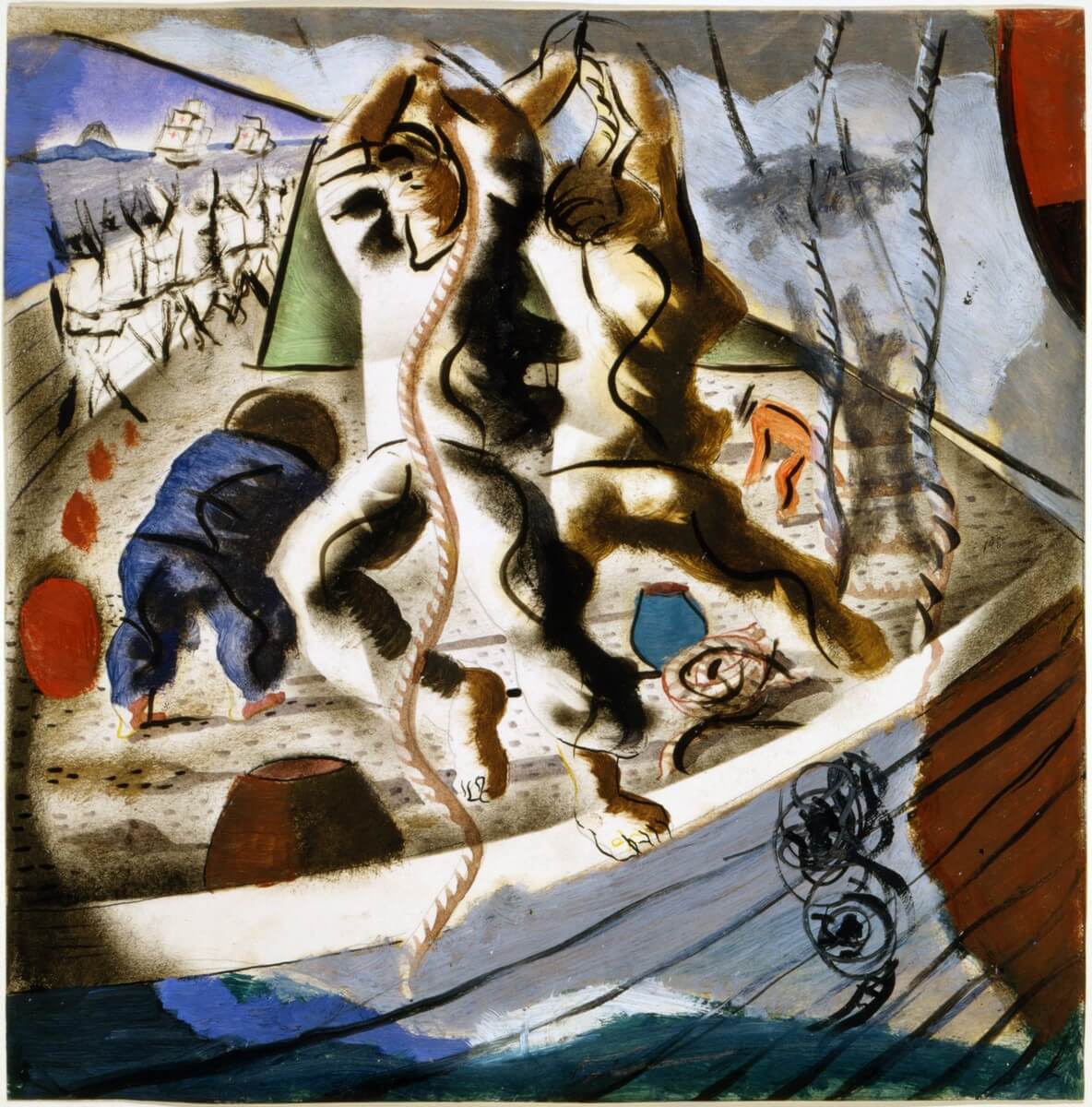
made a stop, one stop
For the train to carry coffee,
Before, difficult roads, only ox carts
transited, taking days and days.
After, a house here, another there.
(PORTINARI, 2018, p.19)
Portinari's Poetry is intertwined with his Painting and it may be that this part of his poem brings to mind the universe of colors of this great artist who passed through Brazil. Your name was written in the colors you used; through the characters he painted; by the places you've been; or in the portraits you illustrated. Your name is in the eyes of farmers tired of hard work; is on the exhausted faces of the retreatants; is in the coffee fields that so represented Brazil; is, especially in the sparkle of children's eyes in innocent games in open fields. one here, another there, the scattered houses of the first half of the 20th century in the country, are also inhabited by this great artist in his portraits, its themes and colors so unmistakable to the eye of the observer.
Candido Portinari (1903-1962) was the painter of these people, of this life and left portraits of Brazil full of Poetry that lived in your soul. The artist went further, also used words to describe his country. Your Poetry Talks to Painting, as if the words acquired colors and tinted the blank paper of the book. It is as if the field of vision of his painted work were expanded in all the expressiveness that it has.
Portinari was among the artists who brought the Modern to Brazil, innovating aesthetics and exposing a real country with its history and ills. The Expressionism was the language of this great painter. His intense Art allowed to feel the melancholy of the family of migrants, running from drought and misery. The dynamism was present in the cheerful and vivacious coloring of children in several of their games., in the middle of fields, running free as if they were moving, back and forth.
As the world watched the effervescence of currents emerging across Europe, this modernity arrived in Brazil in a hurry with a unique and unmistakable character. While the world lived its own heartbreaks, in the midst of wars, revolutions and unrest, Brazil was emerging, grew up and received immigrants fleeing countries in conflict.
Born in 29 th December 1903, on a coffee farm near Brodowski, in São Paulo, Portinari painted much of what he saw and lived. The inclination towards Art arrived in childhood and 14 years Portinari was recruited by a group of painters and sculptors who restored churches in the region. Two years later, the artist went to Rio de Janeiro to study Fine Arts, standing out among the students. Shortly thereafter, he was already participating in exhibitions and his name appeared in newspapers.. Although Modernism was a field of interest for the still young Portinari, the gold medal for his academic work was also awarded a trip to Europe. Spent two years in Paris, where he met many artists and Maria Martinelli (1912-2006) with whom he lived until the end of his life. Back to Brazil in 1931, Portinari was already prominent among Brazilian painters. His style was full of colors and left the traditional aesthetic aside., leaving for the murals and the frescoes, who have made his name so evident; and turning to social issues.
At first glance, the intense colors seem to stand out in the illustration (Fig. 1). blue dots, red, green and orange draw attention and contrast with mild tones. in full motion, the whole crew agitated, seems to strain to pull strings, to contain sails and boat. In the distance it is possible to make out the land sighted, the blue sky and also the mountains, given the distance from the ship. The expressiveness is due to the protagonists of the scene in full motion; and by the wave of the wavy sail, with points of light and shadow.
Portinari's participation in the World Art Fair in New York caught the attention of Alfred Barr, director of the Museum of Modern Art in New York (MoMA) who ended up acquiring his work and exhibiting it at the. And Portinari's work enchanted in more exhibitions in the United States, passing through Europe and Israel.
The museum was created in 1979, by João Candido Portinari, artist's son, The Portinari Project aimed to rescue the work of this great Brazilian artist and bring it to public access. Going through the cataloging phase of works, the project also focused on educational activities for children and young people.
And the artist's creative spirit still circulated through the fields of Poetry, from the friendship and encounters he had with many writers of the time. In many of these meetings his son João Candido was present. From this contact with the poetry of the time, Portinari's inspiration extended to the field of Letters and led him to write the book that circulated in 1964. The idea of an updated edition with images of the artist's works came from researcher Patrícia Porto, who organized the writings and guided the publication for contemporary.
Portinari's Poetry embraces his Art and welcomes it; his Art is clothed in Poetry and enchants us. Both are charged with the task of making the mind wander, to bring breath to the weary mind, to escape from the troubled world. Surrender to the contemplation and ecstasy of Art it's like performing endless affection in the soul that is almost always absorbed and forgotten. To open the field for fruition is to allow the spirit to detach itself in rapture, in enchantment.
Sign up to receive Event News
and the Universe of Arts first!
Portinari Project Link:
www.portinari.org.br
Link to the Casa Portinari Museum:
www.museucasadeportinari.org.br
UOL report on Portinari's book:
vimeo.com/451281544
Film About Book “Poemas De Portinari” directed by Pedro Paulo Malta, from FUNARTE:
vimeo.com/343302884
References:
- PORTINARI, Candido. Portinari's Poems. Rio de Janeiro: FUNARTE, 2018.
- FARTHING, Stephen. Tudo Sobre a Arte. Rio de Janeiro: Sextante, 2011.
- GOMBRICH, E.H. A História da Arte. Rio de Janeiro: Editora Guanabara, 1988.
- PROENÇA, Graça. Descobrindo a História da Arte. São Paulo: Editora Ática, 2005.
You might also like:
- First Traces of Modern Art – Abstract Expressionism in Brazil by Rosângela Vig
- Modern Art – Abstract Expressionism by Rosângela Vig
- First Traces of Modern Art – Impressionism in Brazil by Rosângela Vig
- Modern Art – Surrealism by Rosângela Vig
- Modern Art – Abstractionism by Rosângela Vig
- Modern Art – Cubism by Rosângela Vig
- Modern Art – Expressionism by Rosângela Vig
- First Traces of Modern Art – Symbolism by Rosângela Vig
- First Traces of Modern Art – Post-Impressionism by Rosângela Vig
- First Traces of Modern Art – Impressionism by Rosângela Vig
- Romanticism in Brazil by Rosângela Vig
- Romanticism by Rosângela Vig
- The Neoclassical Art in Brazil by Rosângela Vig
- The Rococo in Brazil by Rosângela Vig
- The Neoclassical Art by Rosângela Vig
- Rococo by Rosângela Vig
- How appears the Surreal Work by Rosângela Vig
- The Baroque in Brazil by Rosângela Vig
- Baroque by Rosângela Vig
- Mannerism by Rosângela Vig
- Flemish Art – Renaissance in Northern Europe by Rosângela Vig
- Renaissance by Rosângela Vig
- The Contemporary, A little about the Urban Art by Rosângela Vig
- The Naive Art – Ingénue Art by Rosângela Vig
- Middle Ages, Byzantine Art by Rosângela Vig
- Middle Ages, Romanesque Art and Gothic Art by Rosângela Vig
- The Roman Art by Rosângela Vig
- Greek Art, Art History in Ancient Greece by Rosângela Vig
- The Egyptian Art by Rosângela Vig
- The Prehistoric Art by Rosângela Vig
- The beauty Art and the sublime Art by Rosângela Vig
- The Game of Art by Rosângela Vig
- The Misunderstood Art by Rosângela Vig
ROSÂNGELA VIG
Sorocaba – São Paulo
Facebook Profile | Facebook Fan Page | Website
Columnist at Website Obras de Arte
E-mail: rosangelavig@hotmail.com

